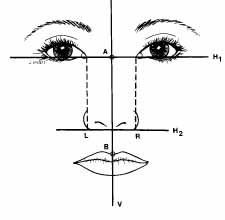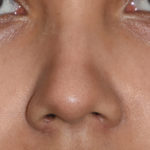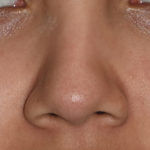Of the many components that make up the nose, one of the most overlooked by patients is the width of the nasal base, known as alar width or how wide or flared the nostrils are. The horizontal width of the nostrils (alar base) does play an important role in the overall appearance and proportion of the nose. Overly wide or flared nostrils can give the appearance of a bottom heavy nose and can throw off the balance of a well shaped and balanced bridge of the nose and the nasal tip. They can also detract from an otherwise well done rhinoplasty result.

Nostril (alar) size reduction is usually done as part of a rhinoplasty operation. It is fairly easy to determine if this procedure is needed by whether the patient points it out as an issue, by measurements done on the patient and, most importantly, by computer prediction imaging prior to surgery. However, there are a few instances when the width of the nostrils can be changed by what is done during rhinoplasty surgery and your plastic surgeon will point this out to you beforehand should that be a concern.

In my Indianapolis plastic surgery practice, I find that the need for alar base reduction is needed in less than 10% of the rhinoplasty surgeries that I do. When done, it adds nothing to the recovery time of the operation, requires no care afterwards (sutures are dissolveable), and takes very little extra operating room time to do. In the properly selected patient, alar base reduction can be a subtle procedure that improves a rhinoplasty result.
Dr. Barry Eppley
Indianapolis, Indiana



